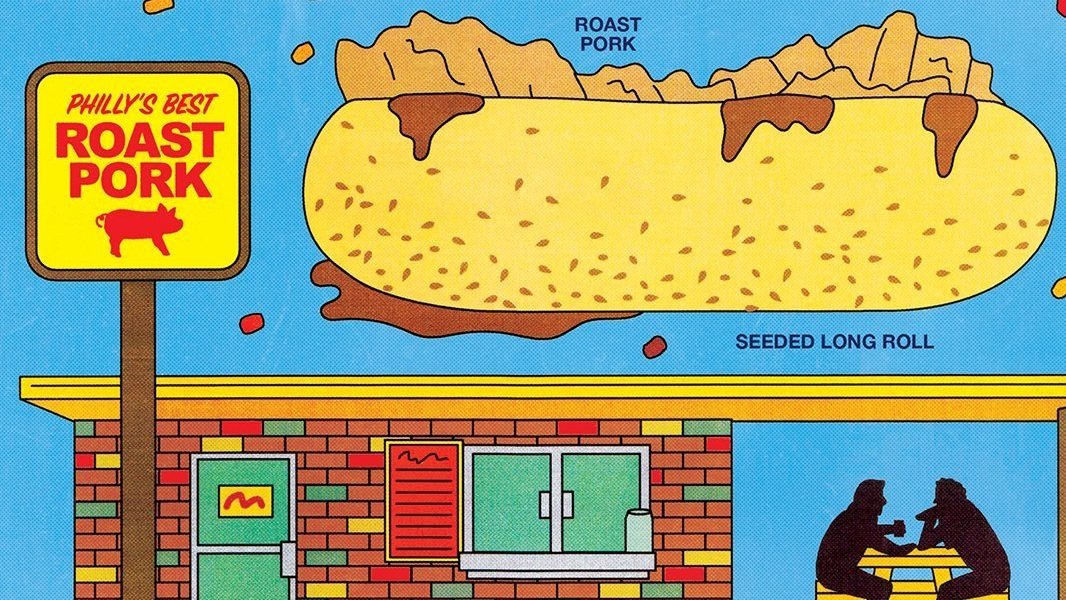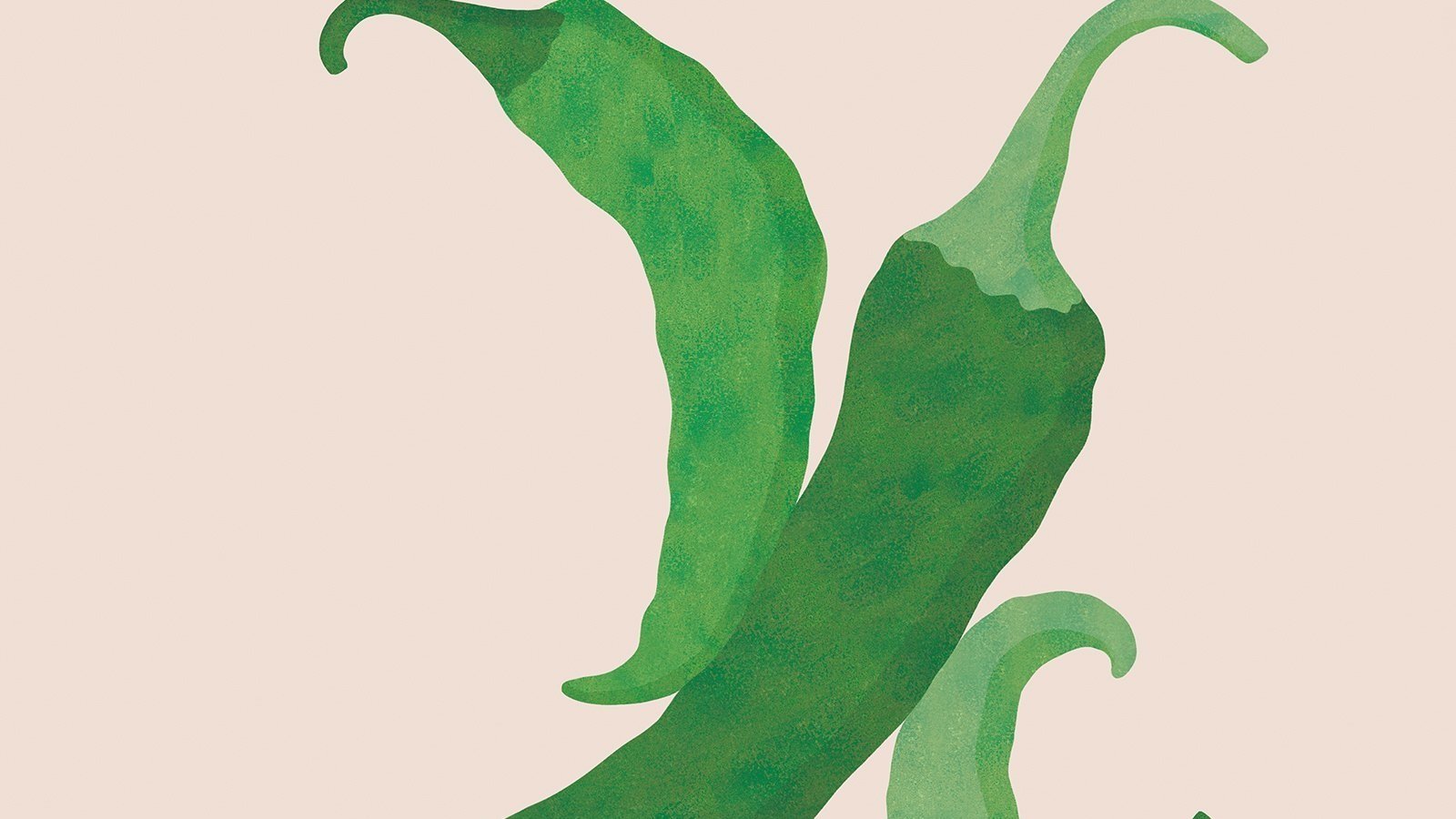On The Strange Appeal And Political Iconography Of Spam
Text by Rebecca May Johnson
Illustration by © Alice Tye
The problem was with language at first, because that was how we encountered it. A word that advertises its own fake-ness. A word made from words blended together – but which words? Like a chimera, a beast made from parts of other beasts. Except it can’t be, not quite, because we can’t see which beasts it’s made from. The locus of my anxiety in the early 1990s – a word for meat that hovers between unknown referents. What are you made from? In the beginning there was a word, invented by a Hormel company man in Minnesota for $100. America, 1936: A new food in the age of industrialized reproduction with an uncanny name, SPAM. The mixed-up meat, an unnerving can of not-ham.
My unease around Spam began in the first decade of my life, when mass-produced meat of uncertain provenance caused widespread panic. Mad Cow Disease; BSE (Bovine Spongiform Encephalopathy); Creutzfeldt Jakob Disease were in every British newspaper with terrifying headlines. In the playground at school we imagined our brains disintegrating. How could we tell if it was happening? When we couldn’t remember something, was that a sign? Europe gave British beef the cold shoulder for years. Variations on the same jokes were told over and over: Two cows are out grazing in the field. One cow says to the other cow, “Aren’t you worried about this mad cow disease that’s been going around?” The other cow replied, “Why would I be worried about mad cow disease? I’m a duck!”
Mad cow disease brought the terrifying opacity of industrialized meat production into focus for a new generation. Cows had been fed the blitzed-up bones of sick sheep. What would they feed us? My mistrust was concentrated in a horror of all reconstituted or ambiguous meat. Although pork was not affected by BSE, I didn’t eat sausages out of choice until I was well into adulthood. School lunch was the chief focus of my early investigations. A dull-colored molded plastic tray with indented sections for a main dish, a dessert and a side. I obsessively forked through ice cream scoop balls of mashed potato for evidence that it derived from the powdered potato product, SMASH. Rubbery cheap sausages with lurid pink insides were pushed aside. I cautiously sniffed chunks of anonymous meat in the squares of pie we to determine their origin. I concealed rejected specimens under a blanket of uneaten potato. Perhaps they were trying to feed us cat food. Spam was the deconstructed meat product that epitomized our fear of processed food the most. We speculated about how disgusting it would be. The gossip of 7-and-8-year olds is: What’s for lunch? My brother swears we were fed Spam, but I can’t actually remember eating it, only the horror that it might be served. Perhaps I repressed the memory.
“Spam was the discursive meat product that epitomized our fear of processed food the most.”
The block of meat inside the blue and yellow can is made from ham and pork shoulder mixed in a factory with water, sugar, salt, potato flour, sodium nitrate. It cooks and cools inside its container and does not need refrigeration. Unnaturally springy and pink meat is covered in a clear, slime-like meat jelly that eases its slide out. We were influenced by our parents, baby boomers with a lingering horror of Spam as a relic of wartime rationing and post-war drabness (though Conservative prime minister Margaret Thatcher referred to it as a ‘wartime delicacy’). A famous 1970 sketch from the comedy Monty Python is set in a greasy spoon café with a menu where every dish features spam. A traumatized woman screams ‘I DON’T LIKE SPAAAAAMMM’ after trying to order a dish without it, and a choir sings ‘spam spam spam spam spammity spam’. Spam is a joke about unwanted proliferation. The Oxford English Dictionary credits the Python sketch with inspiring the use of the word to describe a mass of irrelevant or illegitimate emails or online posts: ‘put in spam folder.’
But the ubiquity of Spam, even in its actual absence, in the culture I was born into is a symptom of America’s global military, economic and political dominance in the twentieth century. As corned beef (canned salt beef) was the processed meat of the British empire, traded and distributed to the colonies, Spam was the twentieth century American equivalent. Wherever the US military has been in the world, so too, has Spam. The 1941 US Lend-Lease agreement to provide aid to the Allied forces in the second world war saw over 150 million pounds in weight of Spam shipped into Europe and Asia. Nikita Khrushchev credited the branded luncheon meat with saving the Russian army from starvation. Gruesomely, its fatty residue was used by soldiers to grease guns. Millions of hungry bodies and millions of guns — Spam as part of an industrial military food complex.
American military presences in Hawaii, the Philippines, Guam, Okinawa and South Korea have left their trace in the integration of Spam into regional cuisines. Hawaii eats more Spam per capita than anywhere else, at 16 cans a year. McDonalds and Burger King in Hawaii serve Spam Platter with eggs and rice, or in a burger with melted cheese, and the most popular Hawaiian snack is the ‘Spam Musubi’ – a small block of rice topped with grilled spam wrapped together with nori seaweed. The region holds a long running festival in its honor called ‘Spam Jam’. In South Korea, Spam is sold as a premium foodstuff in presentation › gift boxes, and in Hong Kong it’s eaten in a fried egg and macaroni soup. If I had grown up on the Pacific island of Guam where it is eaten in huge quantities with tinned sweetcorn, tomato sauce and rice, Spam would perhaps invoke fond memories of Spam fried rice. I have a sneaking suspicion that British culture’s hysterical mockery of Spam (instead of an appropriative embrace, as in Hawaii) expresses the trauma of the substitution of American for British world domination.
American artist Ed Ruscha’s investigations of Spam through photographs and paintings in the early 1960s tease out its cultural and political resonances. The photograph Spam (Cut in Two), 1961, has a can on its side with a slice carved from the end like a joint of meat. The styling of the can, positioned at an angle with the meaty interior displayed invitingly to the viewer, mimics photographs in cookery books. The image suggests that Spam might take the place of traditional roasted joints, to be ritually carved by father at the table. Spam might hold the family together in lean times if the ‘real’ thing is not available. But the visual contrast between branded metal and the mashed block of meat makes the homely styling absurd, and embodies the rabid commodification of everyday life. It suggests that Spam both reenforces existing power structures and introduces ominous new ones. Elsewhere, in ‘War Surplus’ and ‘Actual Size’, Ruscha draws a line from Spam to American imperialism, highlighting the partnership between military might and branded products.
You can only so long stare at a can of Spam before the desire to enquire within overwhelms—I recently caved, and tried Spam and a Spam variant.
The first time is Spam itself in the economically depressed, working class, mostly Brexit voting, mostly white seaside town where I live. Spam has been catching my eye on the menu of my local fish and chip shop for a while and so one chilly day, my partner and I line up behind a queue of white-haired men who are waiting for their lunch to come out of the fryer. “I’m trying the Spam fritters,” I say. I am embarrassed saying the word out loud in front of the older customers for whom Spam is a commonplace. “Two please, medium chips, and a pot of mushy peas.” As I wait for it to cook, I read the tribute on the wall to the previous owner of the chip shop, who was called ‘Spam’. He grins at me from his photo. The woman behind the counter adds salt and vinegar to the fritters and wraps them in paper. We squeeze past the old men and walk home, where we each place a piece of battered Spam on a plate with chips and peas. I cut through the brown batter to reveal the pink Spam within and dip a slice in vinegary brown sauce. It’s not what I expect. I had imagined it highly seasoned and overwhelming, but what I taste is a mild, just detectable hammy flavor, and not as salty as I’d hoped. It is neither delectable nor revolting.
The second occasion is a cheap lunch in London’s Chinatown. As a woman eating alone, I have the semi- regular experience of being given a bad table, then being asked to move seat to make space for a couple. Facing a blank wall around an awkward corner, I wait for my order. Except that my food is given to the couple who ordered after me. They realize it isn’t theirs because they’ve ordered the vegetarian versions. Eventually my dishes arrive (at my table). The hot and sour soup, which somehow, I’ve not eaten before, is a small bowl of thick translucent brown liquid bursting with mushrooms, tofu and wisps of egg. As I examine the broad white spoon, I see matchstick pieces of chopped processed meat. I eat it. In the rich, vinegary soup the meat gives a savory flavor and an enjoyable bouncy texture that contrasts to the general softness. Delicious! I drink every drop; the hot and sour soup is free from my inherited disgust.
“Like making sausages, canning is an efficient way to prepare meat, using less visually appetizing parts of an animal.”
At the beginning of the twenty first century I had a horror of mass production and branded homogeneity, anxiety about the loss of individual identity. How strange, the cultural moment that produced craft beer, craft burgers, craft pizza, craft coffee and ‘street food’ cooked by former bankers in craft denim. But our desire to live in a pre- industrial wonderland contributed to the development of a foodsystemwiththeextremeartisanalononeside,andfood banks on the other. It occurs to me that despite the shudder it often inspires, Spam has renewed relevance in this historical moment—at least conceptually. Food deserts are systemic problems, and Spam is above all, a system. People and governments need to become-more-Spam to solve environmental and hunger crises. Like making sausages, canning is an efficient way to prepare meat, using less visually appetizing parts of an animal. And unlike sausages, canned meat does not need energy-sapping refrigeration to stay fresh. Perhaps Spam causes unease among privileged groups because they don’t like to think about why Spam might need to exist; Spam-thinking goes beyond the individual. I am beginning to think that if environmentally beneficial farming and nutrition were integrated as priorities, Spam-like food systems could feed us all.












